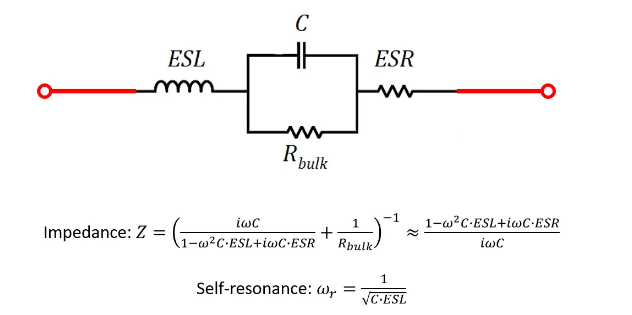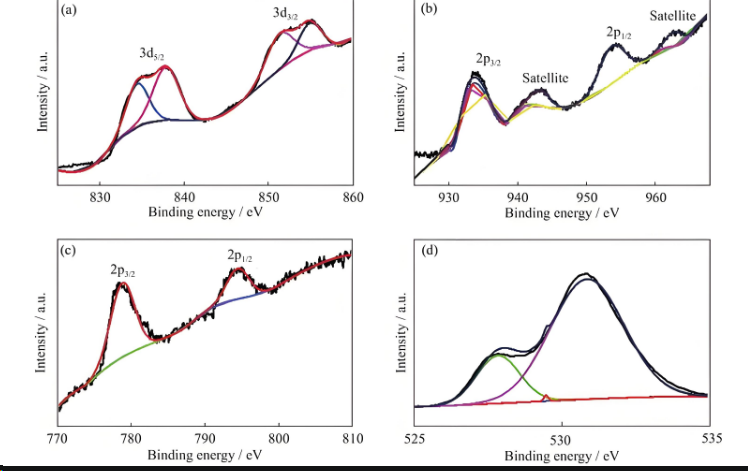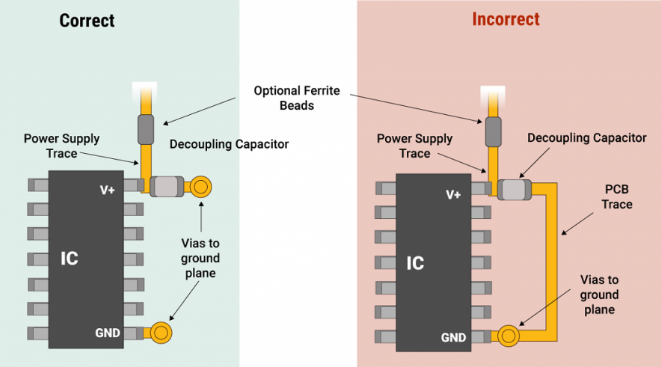Capacitors are essential components in electronic circuits, but their performance isn’t as simple as just storing and releasing charge. Two often-overlooked factors, Equivalent Series Resistance (ESR) and Equivalent Series Inductance (ESL), play a critical role in how capacitors behave, especially in high-frequency applications. If you’re wondering how capacitor ESR and ESL affect circuit performance, the answer lies in their impact on impedance and energy loss. High ESR can cause power loss and heat, while high ESL can degrade performance at high frequencies by increasing impedance. In this blog, we’ll dive deep into capacitor ESR, capacitor ESL, equivalent series resistance, equivalent series inductance, capacitor impedance, and high-frequency capacitor behavior to help you design better circuits.
What Are ESR and ESL in Capacitors?
Before we explore their effects, let’s define ESR and ESL. Capacitors aren’t perfect components; they have parasitic properties that affect their performance. ESR, or Equivalent Series Resistance, is the resistance associated with the capacitor’s internal structure, including its leads, electrodes, and dielectric material. ESL, or Equivalent Series Inductance, is the inductance caused by the capacitor’s leads and internal construction, which becomes significant at higher frequencies.
Think of ESR as a tiny resistor in series with an ideal capacitor, causing energy loss as heat. ESL acts like a small inductor, impacting how the capacitor responds to rapid changes in voltage or current. Together, these factors contribute to the overall capacitor impedance, which determines how well the capacitor performs in a circuit, especially under high-frequency conditions.

Why Do ESR and ESL Matter in Circuit Design?
In an ideal world, capacitors would have zero resistance and inductance, but real-world capacitors always have some level of ESR and ESL. These parasitic effects can significantly alter circuit performance, especially in applications like power supplies, filters, and high-speed digital circuits.
For instance, in a power supply circuit, a capacitor with high ESR can lead to excessive heat and reduced efficiency because of power dissipation. In high-frequency circuits, such as those found in modern microprocessors operating at clock speeds of 1 GHz or more, high ESL can cause the capacitor to behave more like an inductor, increasing impedance and failing to filter noise effectively. Understanding and minimizing capacitor ESR and ESL is crucial for optimizing circuit performance.
The Role of Capacitor Impedance
Capacitor impedance is the total opposition to current flow in an AC circuit, and it’s influenced by both ESR and ESL alongside the capacitor’s capacitance. At low frequencies, impedance is dominated by capacitance and decreases as frequency increases. However, as frequency rises, ESL starts to take over, causing impedance to increase. ESR adds a constant resistive component to the impedance across all frequencies.
This behavior is often visualized as a “V-shaped” curve on a graph of impedance versus frequency. At the bottom of the “V,” the capacitor reaches its self-resonant frequency (SRF), where the capacitive and inductive effects cancel each other out, and impedance is at its lowest, determined mostly by ESR. Beyond the SRF, the capacitor acts more like an inductor due to ESL, which can be problematic in high-frequency applications.

Deep Dive into Equivalent Series Resistance (ESR)
ESR, or equivalent series resistance, represents the resistive losses within a capacitor. These losses come from the materials used in the capacitor, such as the dielectric, electrodes, and leads. ESR is particularly important in applications where capacitors handle significant current, like in power supply decoupling or filtering.
A high ESR value means more energy is lost as heat, reducing the efficiency of the circuit. For example, in a switching power supply operating at 100 kHz, a capacitor with an ESR of 100 mΩ passing a ripple current of 1 A will dissipate 0.1 W of power as heat (calculated as I2R, or 12 × 0.1). Over time, this heat can degrade the capacitor and other nearby components, shortening the lifespan of the device.
Low-ESR capacitors are often preferred in such applications because they minimize power loss and heat generation. For instance, ceramic capacitors typically have lower ESR values (often below 10 mΩ) compared to electrolytic capacitors (which can range from 50 mΩ to several ohms), making them better suited for high-current or high-efficiency designs.
Applications Impacted by ESR
In power supply circuits, ESR directly affects the output voltage ripple. A higher ESR leads to larger voltage fluctuations, which can cause instability in sensitive electronics. In audio circuits, high ESR can introduce noise or distortion, affecting sound quality. Choosing a capacitor with an appropriate ESR value is essential for maintaining performance in these scenarios.
Exploring Equivalent Series Inductance (ESL)
ESL, or equivalent series inductance, arises from the physical structure of the capacitor, particularly the leads and the way the electrodes are constructed. While ESL might be negligible at low frequencies, it becomes a dominant factor in high-frequency capacitor behavior.
At high frequencies, ESL causes the capacitor’s impedance to rise, reducing its effectiveness as a filter or decoupling component. For example, in a high-speed digital circuit with signal frequencies above 100 MHz, a capacitor with high ESL might fail to suppress noise, leading to signal integrity issues. This is why low-ESL capacitors, such as multilayer ceramic capacitors (MLCCs), are often used in such applications, as they can have ESL values as low as 0.5 nH compared to 5-10 nH for standard electrolytic capacitors.
High-Frequency Capacitor Behavior and ESL
In high-frequency circuits, capacitors are often used to decouple power lines or filter out noise. However, if the ESL is too high, the capacitor can resonate at a lower frequency than desired, rendering it ineffective. The self-resonant frequency (SRF) of a capacitor, determined by both its capacitance and ESL, marks the point where it transitions from capacitive to inductive behavior. For instance, a 1 μF capacitor with an ESL of 1 nH has an SRF of approximately 5 MHz (calculated as 1/(2π√(LC))). Beyond this frequency, the capacitor will not function as intended.

How ESR and ESL Affect Circuit Performance
The combined effects of ESR and ESL can make or break a circuit’s performance, depending on the application. Let’s break down some common scenarios where these factors are critical.
Power Supply Stability
In power supplies, capacitors are used to smooth out voltage ripples and stabilize the output. A capacitor with high ESR increases ripple voltage, which can lead to unstable operation in devices like microcontrollers or amplifiers. Similarly, high ESL can cause the capacitor to fail at filtering high-frequency noise, leading to electromagnetic interference (EMI) issues.
High-Speed Digital Circuits
In modern electronics, such as smartphones or computers, signal speeds often exceed 1 GHz. At these frequencies, even small amounts of ESL can cause significant impedance, preventing capacitors from effectively decoupling power lines. This can result in voltage drops or noise that affects data integrity. Designers often use multiple capacitors with different values (e.g., 0.1 μF and 1 μF) in parallel to cover a wide frequency range and minimize the impact of ESL.
RF and Communication Systems
In radio frequency (RF) circuits, capacitors must handle frequencies in the range of hundreds of MHz to GHz. High ESL can shift the SRF to a lower value, making the capacitor unsuitable for the intended frequency range. Low-ESL and low-ESR capacitors are critical in these designs to ensure proper signal filtering and minimal loss.
Choosing the Right Capacitor: Balancing ESR and ESL
Selecting a capacitor for your circuit involves balancing capacitance, ESR, and ESL based on the application’s requirements. Here are some practical tips for choosing the right component:
- For Power Supplies: Opt for capacitors with low ESR to minimize heat and ripple voltage. Tantalum or low-ESR electrolytic capacitors are often good choices for bulk capacitance, while ceramic capacitors can handle high-frequency noise.
- For High-Frequency Circuits: Prioritize low-ESL capacitors, such as MLCCs, to ensure effective performance at high frequencies. Check the SRF to confirm it matches your operating frequency range.
- For General Use: If your application operates at low to medium frequencies (below 1 MHz), standard electrolytic or ceramic capacitors with moderate ESR and ESL may suffice.
Always consult the capacitor’s datasheet for ESR and ESL specifications, as these values can vary widely between different types and manufacturers. Additionally, consider the operating temperature and voltage derating, as these can affect ESR over time.
Practical Tips to Minimize the Impact of ESR and ESL
While you can’t eliminate ESR and ESL entirely, you can take steps to reduce their impact on your circuit:
- Use Parallel Capacitors: Combining capacitors with different values can cover a broader frequency range, compensating for high ESL in larger capacitors with smaller, low-ESL ones.
- Optimize PCB Layout: Minimize trace lengths and loop areas between capacitors and the components they serve to reduce additional inductance and resistance.
- Select the Right Dielectric: Different dielectric materials affect ESR and ESL. For instance, X7R ceramic capacitors offer a good balance of capacitance and low parasitic effects for many applications.
Conclusion: Mastering Capacitor Selection for Optimal Performance
Understanding capacitor ESR and ESL is vital for designing efficient and reliable electronic circuits. Equivalent series resistance and inductance directly influence capacitor impedance and high-frequency capacitor behavior, impacting everything from power supply stability to signal integrity in high-speed designs. By carefully selecting capacitors with appropriate ESR and ESL values, and by optimizing your circuit layout, you can ensure better performance and longevity for your projects.
Whether you’re working on a simple power supply or a complex RF system, paying attention to these often-overlooked parameters will give you a competitive edge in circuit design. Keep these principles in mind as you choose components, and always refer to detailed specifications to match the capacitor to your specific needs. With the right knowledge, you can turn potential design challenges into opportunities for innovation.
 ALLPCB
ALLPCB







